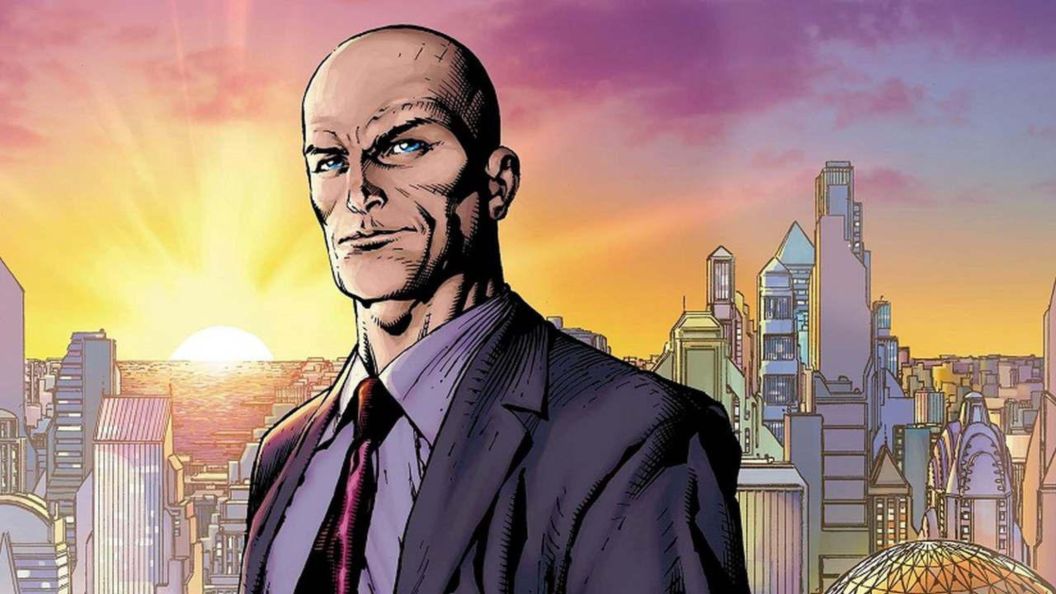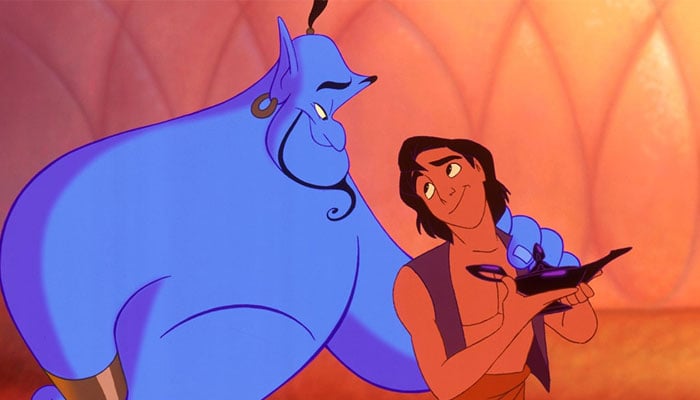Image courtesy of DC ComicsLex Luthor stands as one of DC Comics’ most enduring and influential villains, evolving dramatically since his 1940 debut in Action Comics #23. Initially conceived as a mad scientist by creators Jerry Siegel and Joe Shuster, Luthor has transformed across decades into a corporate tycoon, U.S.
President, and occasional antihero. What makes Luthor exceptional is his reliance on human intellect rather than superpowers, positioning him as Superman’s perfect foil and a dark reflection of humanity’s potential. Furthermore, his complex motivations, ranging from genuine concern about unchecked alien power to megalomaniacal ambition, elevate him beyond typical villainy.

Through Luthor’s perspective, readers confront uncomfortable questions about heroism, power, and whether even Superman’s benevolence represents a potential threat to human self-determination.This reading guide will help navigate eight decades of DC Comics to understand why Lex Luthor remains one of the best villains ever in comic books and beyond.Best Entry Points for New ReadersImage courtesy of DC ComicsLuthor’s 80+ year history can seem overwhelming for those new to comics.
Fortunately, several self-contained stories offer perfect introductions while requiring minimal prior knowledge of DC continuity.Brian Azzarello and Lee Bermejo’s Lex Luthor: Man of Steel presents a complete psychological portrait of Superman from Luthor’s perspective. Across five issues, readers experience Luthor’s worldview as he sees himself not as a villain but as humanity’s protector against a godlike alien threat.
The story also explores how Luthor justifies increasingly unethical actions while maintaining his self-image as a visionary leader. Particularly compelling is Luthor’s monologue about Superman’s alien perspective, comparing human struggles to an ant farm from Superman’s godlike vantage point. This standalone miniseries perfectly encapsulates Luthor’s complex psychology and could serve as the perfect starting point for beginners.
Mark Millar’s Superman: Red Son reimagines Superman landing in the Soviet Union rather than Kansas, with Luthor repositioned as America’s scientific champion against Communist expansion. This three-issue Elseworlds story demonstrates how Luthor’s intelligence might be channeled positively under different circumstances. Throughout the narrative, Luthor develops increasingly sophisticated plans to counter the Soviet Superman, eventually succeeding where his mainstream counterpart always fails.
By placing Luthor in a heroic context while maintaining his core personality traits, Red Son illuminates what drives the character beyond simple villainy.In addition, Grant Morrison’s All-Star Superman features a particularly profound exploration of the Superman-Luthor dynamic, especially in issue #5 (“The Gospel According to Lex Luthor”) and the concluding issues #11-12. When Superman, facing imminent death from solar radiation poisoning, visits Luthor in prison, their philosophical confrontation reveals Luthor’s core belief that Superman’s existence prevents humanity from achieving greatness.
The series culminates with Luthor briefly gaining Superman’s powers and experiencing a cosmic epiphany about interconnectedness — a revelation he ultimately rejects to preserve his ego. This acclaimed series examines Luthor’s ideology with unprecedented depth, making it essential reading despite taking place outside mainstream continuity.Finally, Geoff Johns’ Forever Evil offers a more recent entry point, positioning Luthor as an unlikely protagonist when the Crime Syndicate (evil Justice League counterparts from another universe) conquers Earth.
With the Justice League defeated, Luthor assembles a team of villains to fight back, demonstrating strategic brilliance and unexpected heroism. Throughout the seven-issue event, Luthor’s complex morality comes to the fore as he weighs self-interest against larger responsibilities, particularly when he saves Superman’s life and discovers his secret identity. This story introduced a more nuanced modern Luthor while remaining accessible to new readers.
Essential Entry Point Stories:Lex Luthor: Man of Steel (2005) – Complete five-issue psychological studySuperman: Red Son (2003) – Complete three-issue Elseworlds taleAll-Star Superman (2005-2008) – Twelve-issue series with philosophical LuthorForever Evil (2013-2014) – Complete seven-issue event with Luthor as protagonistThe Scientific Genius Era (1940-1986)Image courtesy of DC ComicsLuthor’s original incarnation established him as Superman’s intellectual counterpart, representing the potential dangers of science unchecked by ethics. His first appearance in Action Comics #23 introduced him as a red-haired scientific mastermind seeking world domination through advanced technology and weapons. Early stories frequently featured Luthor creating doomsday devices, artificial life forms, and other science fiction concepts that challenged Superman.
A significant visual change occurred in Superman #10, where artist Leo Nowak mistakenly depicted Luthor as bald, confusing him with another character. This “error” became permanent, with the bald appearance becoming Luthor’s defining physical characteristic. Throughout the 1940s and early 1950s, Luthor remained primarily a one-dimensional mad scientist, though occasionally stories hinted at deeper motivations.
The Silver Age brought crucial development to Luthor’s backstory in Adventure Comics #271 with “How Luthor Met Superboy.” This pivotal story revealed that teenage Lex and Superboy (Superman as a youth) were once friends in Smallville. When Superboy saved Luthor from a laboratory fire, he inadvertently caused chemical fumes to make Luthor permanently bald.
This perceived betrayal transformed Luthor from a promising scientist to a vengeful villain, establishing his hatred as personal rather than purely ideological. This addition humanized Luthor significantly, suggesting his villainy stemmed from emotional wounds rather than inherent evil.The 1960s-70s further developed Luthor’s complexity through stories set on Lexor, a planet where he was revered as a hero.
In Superman #164, “The Showdown Between Luthor and Superman!,” Luthor saves an alien world and is worshipped by its inhabitants, who view Superman as the villain in their relationship. Later stories showed Luthor marrying a Lexorian woman named Ardora and attempting to reform, only to be pulled back into conflict with Superman. This subplot culminated tragically in Action Comics #544 when Lexor was destroyed during a battle with Superman, costing Luthor his haven and reinforcing his hatred.
This same issue introduced Luthor’s sophisticated battle suit, a technological masterpiece that would define his visual appearance until the 1986 reboot.Key Scientific Era Issues:Action Comics #23 (1940) – First appearance as red-haired scientistSuperman #10 (1941) – First appearance with trademark baldnessAdventure Comics #271 (1960) – Smallville origin story establishedSuperman #164 (1963) – Introduction of planet Lexor where Luthor is heroAction Comics #544 (1983) – Destruction of Lexor and battle suit debutThe Corporate Titan (1986-2000)Image courtesy of DC ComicsJohn Byrne’s post-Crisis reimagining in The Man of Steel radically transformed Luthor from scientific genius to corporate magnate. This six-issue miniseries, particularly issue #4, established a new status quo: Luthor as Metropolis’s wealthiest citizen and LexCorp’s ruthless CEO.
This version of Luthor controlled the city through economic power rather than scientific devices, reflecting 1980s anxieties about unchecked capitalism. The reboot eliminated the Smallville connection entirely, as Luthor now resented Superman simply for stealing his spotlight as Metropolis’s most important figure.This corporate reinvention deepened in The Adventures of Superman #424-425, where writer Marv Wolfman explored Luthor’s business operations and ethical compromises.
These stories established LexCorp’s vast reach across Metropolis infrastructure, with Luthor effectively owning everything from telecommunications to real estate. The reimagining reached its apex in the one-shot Lex Luthor: The Unauthorized Biography by James D. Hudnall and Eduardo Barreto.
This pseudo-journalistic exposé revealed Luthor’s dark past, including the murder of his parents for insurance money, fraudulent business practices, and his rise from Suicide Slum poverty to corporate dominance — all while maintaining a philanthropic public persona.Throughout the 1990s, Luthor perfected this dual identity in stories like Action Comics #700 and the “Fall of Metropolis” storyline spanning multiple Superman titles in 1994. These narratives portrayed Luthor orchestrating Metropolis’s near-destruction while publicly positioning himself as the city’s savior during reconstruction, demonstrating his mastery of manipulation.
The era culminated with “Superman: Dead Again” and the subsequent “Kryptonite Cancer” storyline, where Luthor’s constant exposure to kryptonite (kept as protection against Superman) gave him terminal cancer. In a final desperate act in Superman #175, Luthor transferred his consciousness into a younger, cloned body with a full head of red hair, a symbolic return to his pre-Crisis appearance while maintaining his corporate identity.Essential Corporate Era Reading:The Man of Steel #1-6 (1986) – Complete miniseries establishing corporate LuthorThe Adventures of Superman #424-425 (1987) – Early exploration of LexCorp operationsLex Luthor: The Unauthorized Biography (1989) – Journalistic deep-dive into Luthor’s pastAction Comics #700 (1994) – Anniversary issue highlighting Luthor’s manipulationSuperman #175 (2001) – Conclusion of Kryptonite cancer storyline with consciousness transferLuthor in Power (2000-2009)Image courtesy of DC ComicsThe early 2000s took Luthor’s ambition to its logical conclusion when he became President of the United States.
This unprecedented storyline began in Superman #162-164, where Luthor leveraged his business success and Metropolis reconstruction efforts into a successful presidential campaign. Writer Jeph Loeb used this concept to explore the consequences of a brilliant but morally compromised individual gaining legitimate political power. President Luthor’s administration was detailed across multiple titles, with President Luthor Secret Files and Origins #1 providing comprehensive background on his cabinet appointments and policy initiatives—all designed to consolidate power while maintaining public support.
The presidency storyline reached its dramatic height in the “Our Worlds at War” crossover, where President Luthor coordinated Earth’s defense against the cosmic threat Imperiex. While initially appearing heroic, Luthor’s decisions throughout the crisis revealed his willingness to sacrifice allies for strategic advantage—particularly evident when he redirected an attack toward the Amazons of Themyscira to protect Metropolis. The storyline demonstrated how Luthor’s tactical brilliance functioned on a global scale while exposing the ethical compromises behind his leadership.
Brian Azzarello and Eduardo Risso’s “Luthor” arc in Superman #168-183 provided a darker examination of Presidential Luthor, focusing on his behind-the-scenes manipulation of government resources against Superman. This story arc unveiled how Luthor weaponized legitimate authority through black ops programs and surveillance technology, maintaining plausible deniability while ruthlessly pursuing personal vendettas under the guise of national security.Luthor’s presidency reached its climax in Jeph Loeb’s Superman/Batman: Public Enemies, where he framed Superman for a kryptonite meteor crisis and placed a billion-dollar bounty on him.
As the story progresses, Luthor’s mental stability deteriorates after he uses the Venom steroid (the same drug that empowers Batman villain Bane), leading to increasingly erratic behavior. The storyline culminated with Batman exposing Luthor’s drug use and criminal conspiracies, forcing his resignation in disgrace.Political Luthor Reading:Superman #162-164 (2000) – Presidential campaign and electionPresident Luthor Secret Files and Origins #1 (2001) – Comprehensive administration detailsSuperman: Our Worlds at War (2001) – Complete crossover showing presidential leadershipSuperman #168-183 (2001-2002) – “Luthor” storyline examining the abuse of powerSuperman/Batman: Public Enemies #1-6 (2003-2004) – Complete fall from presidential powerAnti-Hero Evolution (2009-Present)Image courtesy of DC ComicsIn recent years, Luthor’s characterization has evolved beyond simple villainy into more nuanced territory, occasionally positioning him as an antihero when facing greater threats.
This transformation began in the “Blackest Night” and “Brightest Day” events, where Luthor briefly wielded an Orange Lantern ring powered by avarice. Writer Geoff Johns used this cosmic storyline to explore Luthor’s fundamental greed while demonstrating his capacity to work alongside heroes when facing universal extinction.This development continued in Paul Cornell’s “The Black Ring” storyline in Action Comics #890-900.
Following his Orange Lantern experience, Luthor embarked on a quest for godlike power through Kryptonian technology. The story featured Luthor encountering various cosmic entities, including Death of the Endless (from Neil Gaiman’s Sandman), while pursuing Darkseid’s power. Particularly notable was Action Comics #894, where Luthor and Death discussed mortality and ambition in philosophical terms rarely seen in superhero comics.
Throughout the arc, Cornell balanced Luthor’s ruthless methods with moments of genuine insight, portraying him as a complex figure whose brilliance and vision were consistently undermined by his narcissism.Luthor’s most significant heroic turn came in Geoff Johns’ Forever Evil, where he emerged as Earth’s unlikely savior against the Crime Syndicate. With the Justice League presumed dead, Luthor assembled a team including Bizarro, Captain Cold, and Black Adam to liberate the planet.
The story featured Luthor making genuine sacrifices, including risking his life to save Superman, an action that revealed his potential for heroism when properly motivated. The conclusion saw Luthor discovering Superman’s identity as Clark Kent but choosing not to reveal it, marking a significant evolution in their relationship.This redemptive arc continued in Justice League #30-50, where Luthor — inspired by his actions during Forever Evil — joined the Justice League and adopted Superman’s shield as his own symbol.
These stories, particularly during the “Darkseid War” storyline, explored whether a villain could truly reform while testing Luthor’s commitment to heroism under extreme circumstances. In addition, writer Geoff Johns used this period to examine how Luthor’s methods and perspective differed from traditional heroes even when pursuing similar goals.More recent stories during DC’s Rebirth era returned Luthor to villainy while maintaining the complexity established during his antihero phase.
In Action Comics storylines like “Men of Steel” and “The Oz Effect,” writer Dan Jurgens positioned Luthor as an ambiguous figure — sometimes helping Superman while pursuing his own agenda. Meanwhile, the “Year of the Villain” event (2019) saw Luthor embrace cosmic villainy after being chosen by the cosmic goddess Perpetua, transforming into an enhanced being who offered fellow villains powers.Modern Luthor Recommendations:Blackest Night/Brightest Day (2009-2011) – Complete cosmic events with Orange Lantern LuthorAction Comics #890-900 (2010-2011) – “The Black Ring” complete storylineForever Evil #1-7 (2013-2014) – Luthor’s heroic turn against Crime SyndicateJustice League #30-50 (2014-2016) – Luthor’s Justice League membershipAction Comics #957-999 (2016-2018) – Rebirth era ambiguous LuthorYear of the Villain (2019) – Cosmic villain evolutionPhilosophical ExplorationsImage courtesy of DC ComicsSeveral stories outside mainstream continuity have provided deeper examinations of Luthor’s psychology and worldview.
Mark Waid’s Superman: Birthright reimagines Luthor’s origin as a brilliant but isolated youth in Smallville fascinated by extraterrestrial communication. His friendship with young Clark Kent dissolves after an experiment goes wrong, leading Luthor to believe aliens represent an existential threat to humanity. This twelve-issue series examines how similar starting points (scientific curiosity) can lead to drastically different outcomes based on fundamental character traits.
Particularly compelling is how Waid portrays Luthor’s gradual descent from idealistic scientist to paranoid xenophobe, positioning his hatred of Superman as an extension of deeper psychological issues rather than simple jealousy.Max Landis’ Superman: American Alien presents a particularly disturbing version of Luthor in issues #4-7. This reimagining portrays Luthor as a sociopathic genius whose interest in Superman stems from clinical scientific curiosity rather than emotional resentment.
Their confrontation in issue #7, “Hero,” features Luthor coldly explaining his view of Superman as merely an interesting specimen to be studied, in a chilling portrayal that strips away Luthor’s usual emotional motivations to expose the detachment beneath. This interpretation highlights the fundamental philosophical difference between Superman’s compassionate humanity and Luthor’s cold rationality.Philosophical Luthor Stories:Superman: Birthright (2003-2004) – Complete twelve-issue reimagined originSuperman: American Alien (2015-2016) – Seven-issue series with sociopathic LuthorEssential CollectionsImage courtesy of DC ComicsFor readers preferring collected editions, several comprehensive volumes provide excellent Luthor reading experiences while offering contextual information about his character evolution.
Lex Luthor: A Celebration of 75 Years offers a curated anthology spanning Luthor’s publication history from 1940 to modern appearances. This collection includes foundational stories like his first appearance in Action Comics #23, the Smallville origin from Adventure Comics #271, corporate reinvention in The Man of Steel #4, and modern interpretations. Editorial commentary throughout provides historical context for each era’s portrayal, making this volume ideal for understanding Luthor’s evolution across decades without reading thousands of individual issues.
Superman: Lex Luthor collects various standalone stories focused on Luthor, including the Lex Luthor: Man of Steel miniseries, Lex Luthor: The Unauthorized Biography, and selected modern appearances. This collection offers a concentrated dose of Luthor-centered narratives that explore his perspective rather than positioning him simply as Superman’s opponent. The volume effectively showcases how Luthor functions as a protagonist in his own right rather than merely a foil for Superman.
Recommended Collections:Lex Luthor: A Celebration of 75 Years (2015) – Comprehensive historical anthologySuperman: Lex Luthor – Collection of Luthor-centric storiesWhat other Lex Luthor stories would you recommend to comic book beginners? Let us know in the comments!The post Comics Starter Pack: A Beginner’s Guide to Lex Luthor appeared first on ComicBook.com..
Entertainment

Comics Starter Pack: A Beginner’s Guide to Lex Luthor

Image courtesy of DC ComicsLex Luthor stands as one of DC Comics’ most enduring and influential villains, evolving dramatically since his 1940 debut in Action Comics #23. Initially conceived as a mad scientist by creators Jerry Siegel and Joe Shuster, Luthor has transformed across decades into a corporate tycoon, U.S. President, and occasional antihero. What makes Luthor exceptional is [...]The post Comics Starter Pack: A Beginner’s Guide to Lex Luthor appeared first on ComicBook.com.















